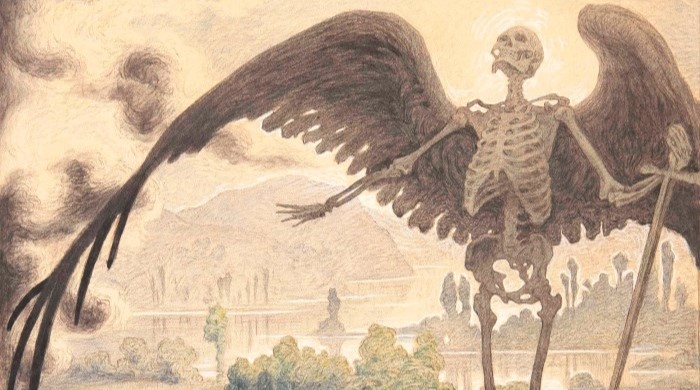Tyra Kleen - A Constant Searcher
The Swedish artist Tyra Kleen (1874–1951) was an adventurous and urbane woman, and a constant traveller. Described by her contemporaries as a vagabond and world traveller, she also lived abroad for long periods. This exhibition is the most comprehensive presentation of Tyra Kleen so far, and we hope that it provides new insights into a complex artistry.

The Lost Paradise. 1909, Tyra Kleen. Photo: Åmells konsthandel
Exhibition period: October 12, 2024–February 23, 2025
Vernissage: October 12
Entry: 80 SEK
Visit the exhibition: Explore practical information, such as the museum’s opening hours and other essential details, before your visit.
Tyra Kleen was born in Stockholm and raised in an aristocratic setting at the family seat Valinge near Nyköping. Her father was a diplomat and brought his wife and children along on his assignments, making her a seasoned traveller childhood. Tyra Kleen made many international friends and learned several languages.
As an artist, she was trained in the symbolist and art nouveau styles and is best known for her symbolist lithographs and portrayals of temple dancers in Java and Bali.
Influenced by esotericism
Tyra Kleen was influenced by the esoteric tendencies of her period. Esotericism is hard to define but can be seen as an overarching philosophical system. Notions that the entire universe is connected, that all living beings have a life flame, and that we can communicate with spirits and refine our souls all fit under the umbrella term of esotericism. Movements such as theosophy, spiritism, occultism, alchemy and astrology also belong in this category.
When the strictly scientific world view and conventional Christian perspectives were challenged at the previous turn of the century, esotericism offered an alternative for those in search of something else. Esoteric movements have had a greater impact on society than previously believed, as seen in both art and literature. Tyra Kleen was deeply interested in esotericism; she was a member of the Theosophical Society, attended seances and showed her art in theosophical circles.
Studied art abroad
Even in her youth, Tyra Kleen displayed a talent for drawing and painting. She studied art abroad, first in Germany, at the Academy of Fine Arts in Munich. This was followed by studies at various academies in Paris. Tyra Kleen was very active there. Apart from her academic studies, she also copied works at the Louvre and other museums or painted together with artist colleagues.
Tyra Kleen was inspired by poets such as Charles Baudelaire (1821–1867) and Edgar Allan Poe (1809–1849). In their writings she found direct inspiration for specific works. She was also interested in theosophical mystics and visited philosophical and theosophical lectures and spiritist seances.1 After Paris, she worked and studied in Rome for nearly ten years.
A famous artist in her own lifetime
Tyra Kleen was a famous and established artist in her own lifetime. Her works were exhibited in renowned galleries and museums all over the world. New York, St Petersburg, London, Paris, Rome and Surakarta are but a few of the cities where she was shown.
Interest in her oeuvre dwindled when modernism came to dominate the Swedish art scene in the 1930s, and she was more or less forgotten after her death in 1951. Tyra Kleen had no children, and her entire estate was bequeathed to Sweden’s House of Nobility, on the condition that the collection should be kept hidden for fifty years after her death.
The collection is managed by Tyra Kleen’s family
In 2001, 50 years after Tyra Kleen died, the collection was once more brought out into the light. Today, the collection is managed by Tyra Kleen’s family, whose enormous dedication has contributed to enabling both research and a touring exhibition in Sweden.
This exhibition is produced by Norrköping Art Museum and realized in collaboration with Uppsala Art Museum, Bohuslän Museum, and Halland Art Museum. The concept and main structure of the exhibition were developed by curator Helena Scragg in dialogue with doctoral candidate Karin Ström Lehander.
Special thanks
Special thanks to Karin Ström Lehander for insights into Tyra Kleen’s artistry, and to museums and individuals who generously contributed to the exhibition. Lastly, a big thank you to Tyra Kleen’s family for their invaluable support during the process.

